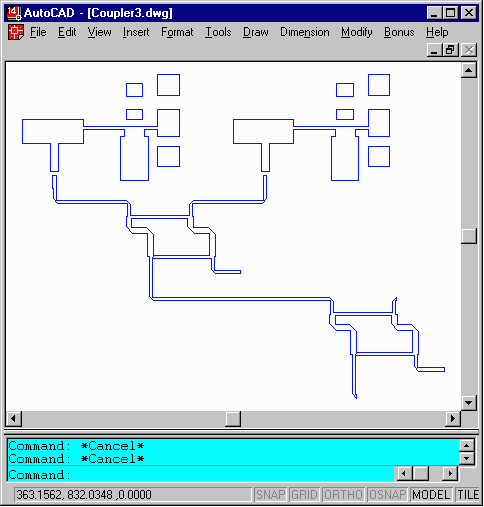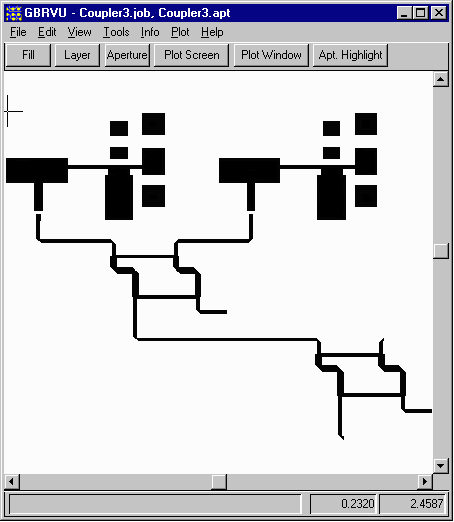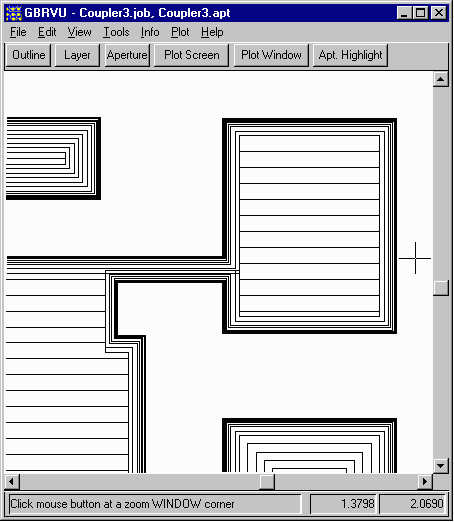|
Why do ASM 502 and ASM 500 cost substantially more than ASM 501? One
important feature is the area fill routines. Microwave, RF, analog and
package designers often require that complex areas designed using AutoCAD
be filled black on the film. There are a couple of ways to achieve this:
|
Hatching
You can always use AutoCAD's hatch command to fill each area with
hundreds or thousands of closely spaced lines. How close? Depends on
the resolution you need. Unfortunately for many microelectronics circuits
you will need to space the lines 0.001 inch apart generating thousands
of lines per area.
AutoCAD actually stores all of these lines in its database and your
display, load, save and regen times will become enormous. Not very
practical if your circuit is at all complex.
There is also the problem of endpoint compensation which I won't even
go into here.
|
|
Fill-on-the-Fly
ASM 502 and ASM 500 have powerful fill-on-the-Fly routines. They recognize
certain objects as fillable - circles, solids and either polylines with
width or zero width closed polylines and automatically fill these entities
during the translation.
Your AutoCAD file stays small but your film looks correct.
Furthermore, they don't use a single small pen to fill the figures - Both
programs use a sophisticated multi-aperture fill routine. A small pen is
used around the edge of the polygon and larger pens are used to paint
the interior region.
|


